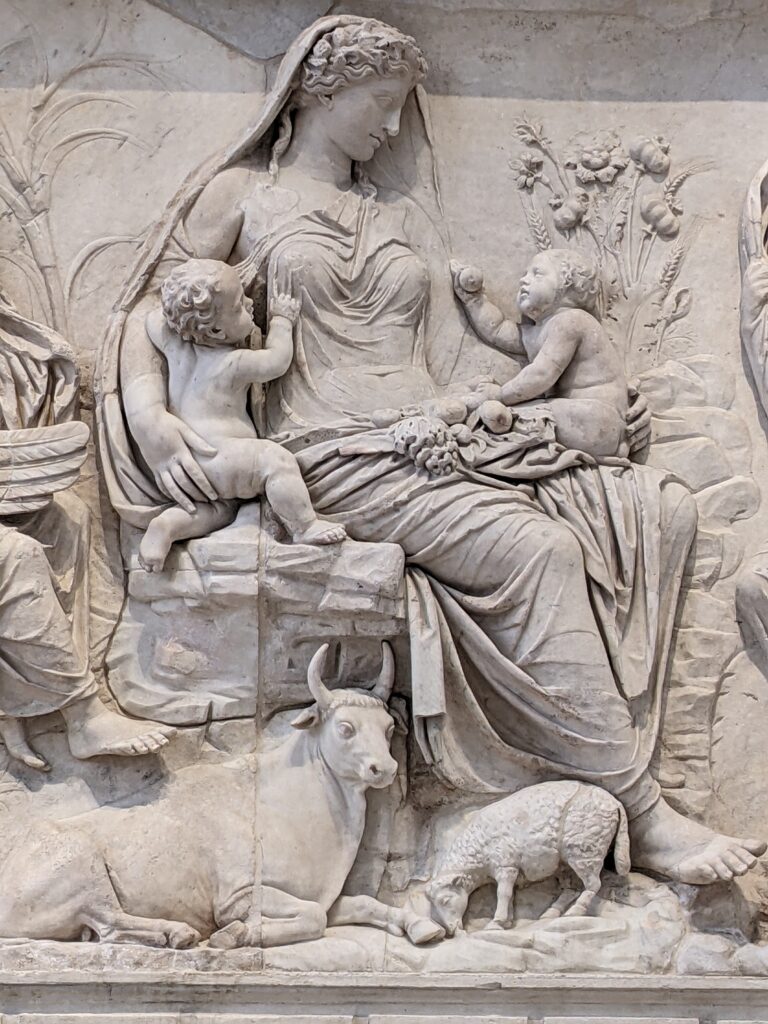Looking up into one of the fountain’s in the forecourt Bernini designed for St Peter’s cathedral in Rome.
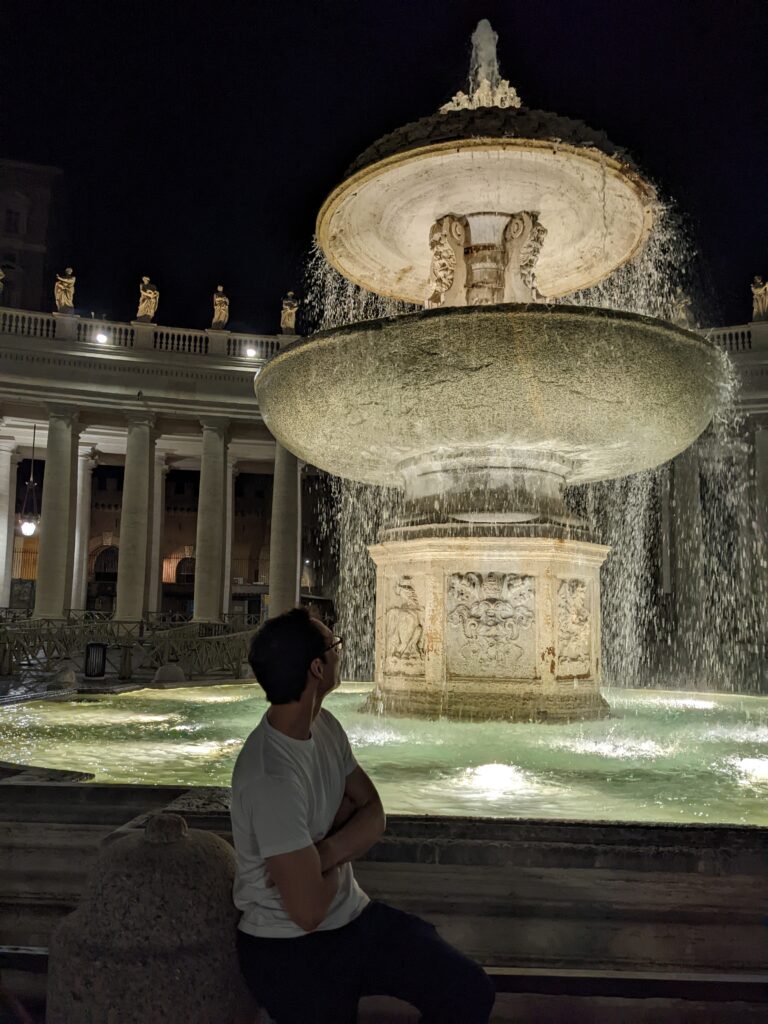
The cathedral and its cathedra is like a hallucination – too vast and over the top to be real. The next morning I was the third person admitted into St Peter’s and had it all to myself for at least a short while. The size and the height was hard to comprehend.
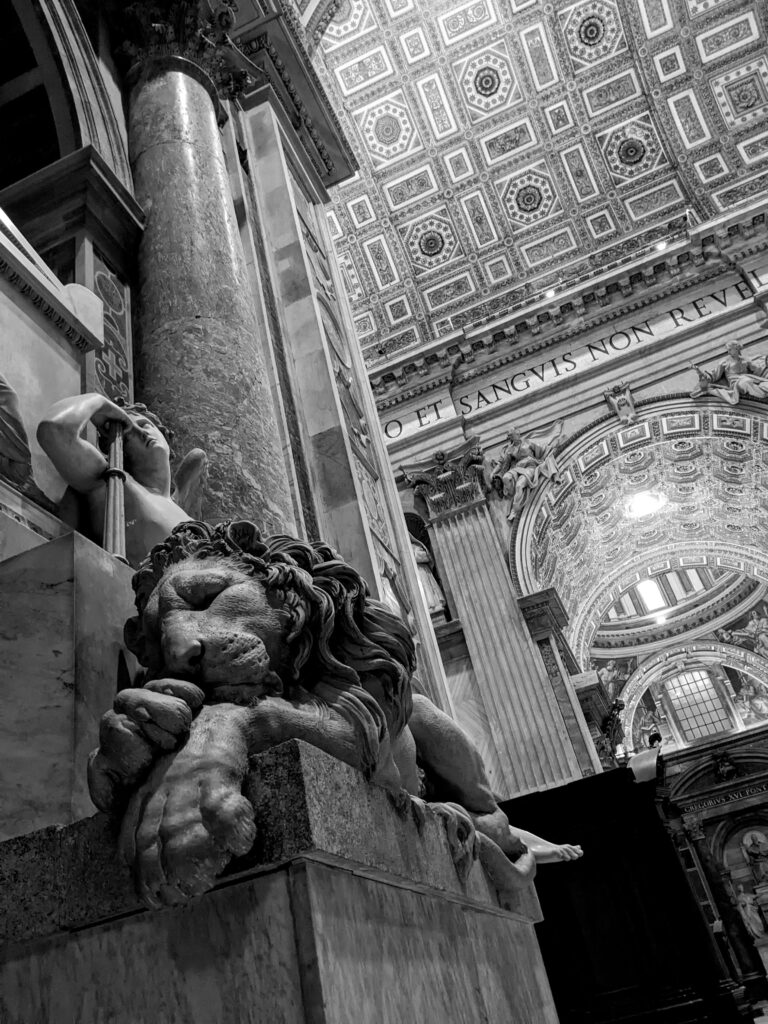
The piazza in front of St. Peter’s is more inspiring to me. The afternoon I arrived in Italy I had walked into Bernini’s stone arms of the church by myself in the afternoon sunshine and almost gasped at the scale of the colonnade and the fountains and the freedom of space and maximum amplitude of grandeur in travertine stone. A moment in time I won’t forget. A moment where a human creation uplifts one in a direct and profound way.
The best way to experience the most well known places in the world these days – St Peter’s in Rome included – is to arrive at them at first light. This is the time I took the below photo.
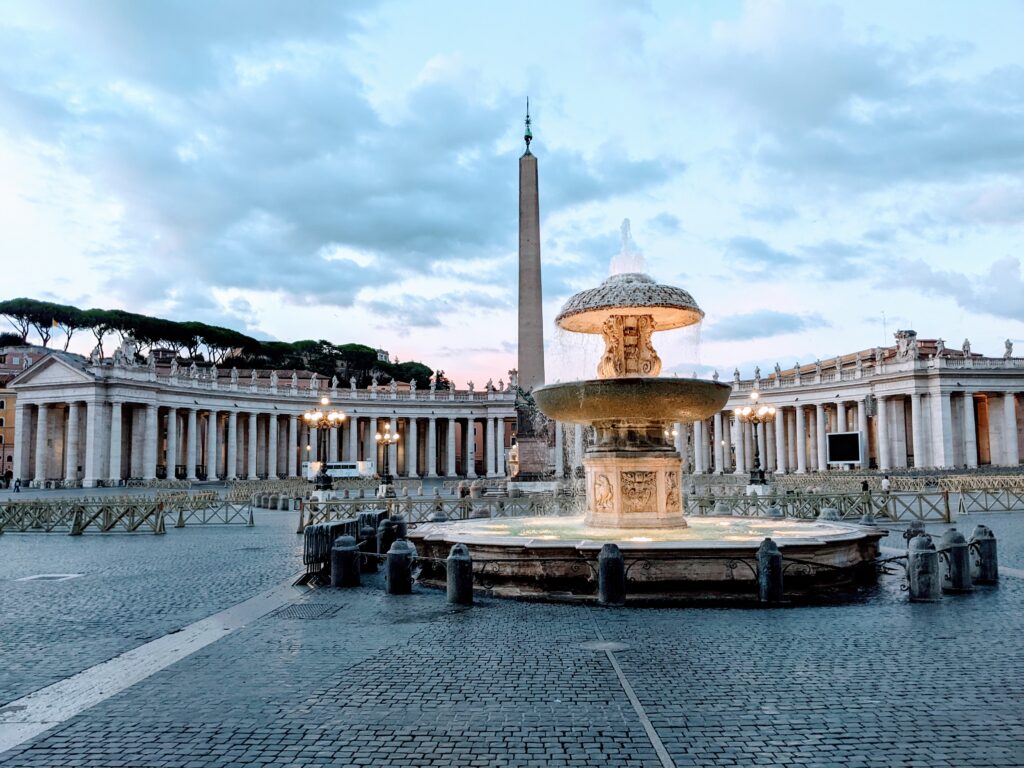
My first few hours in Italy, after seeing Bernini’s forecourt, I walked over the Ponte St Angelo and the angel’s stone wings hung in splendour over the cool and quiet Tiber below. Then I ducked into a cobbled street full of antique shops to the left – Via dei Coronari – antique shops better than I had ever seen in my life. Rome in those first hours was a revelation to me.
The American architect Louis Kahn understood that spaces can affect the quality of our very thinking: “In a small room one does not say what one would in a large room.” Research in the new field of embodied cognition tells us that Kahn was prescient when he said: “There’s something about a 150-foot ceiling that makes a man a different kind of man,” while visiting the Roman Baths of Caracalla. I would agree with Kahn. I would feel like a different kind of man bathing in such a space rather than having a shower in a cubicle in my gym.
But how can you enter such a space? In the below photo I’m standing in Santa Maria degli Angeli, which has been a church since the Renaissance, but is basically just a reused section of the ancient thermal Baths of Diocletian. So as I looked up at the red granite columns I was transporting myself back two thousand years to when this space was full of bathers soaking and splashing in huge granite tubs of hot, warm and cold water, surrounded by colossal statues and acres of space.
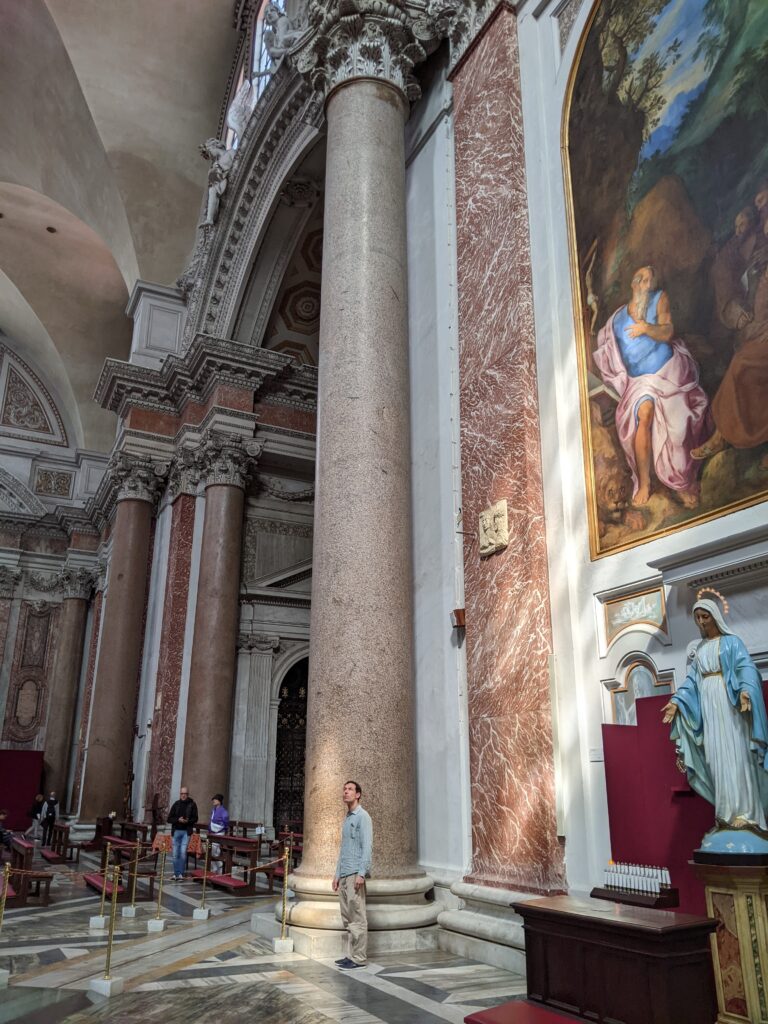
One of the best things I did in Rome was to go out to the Protestant Cemetery, and pay my respects at the grave of John Keats, one of England’s greatest poets.
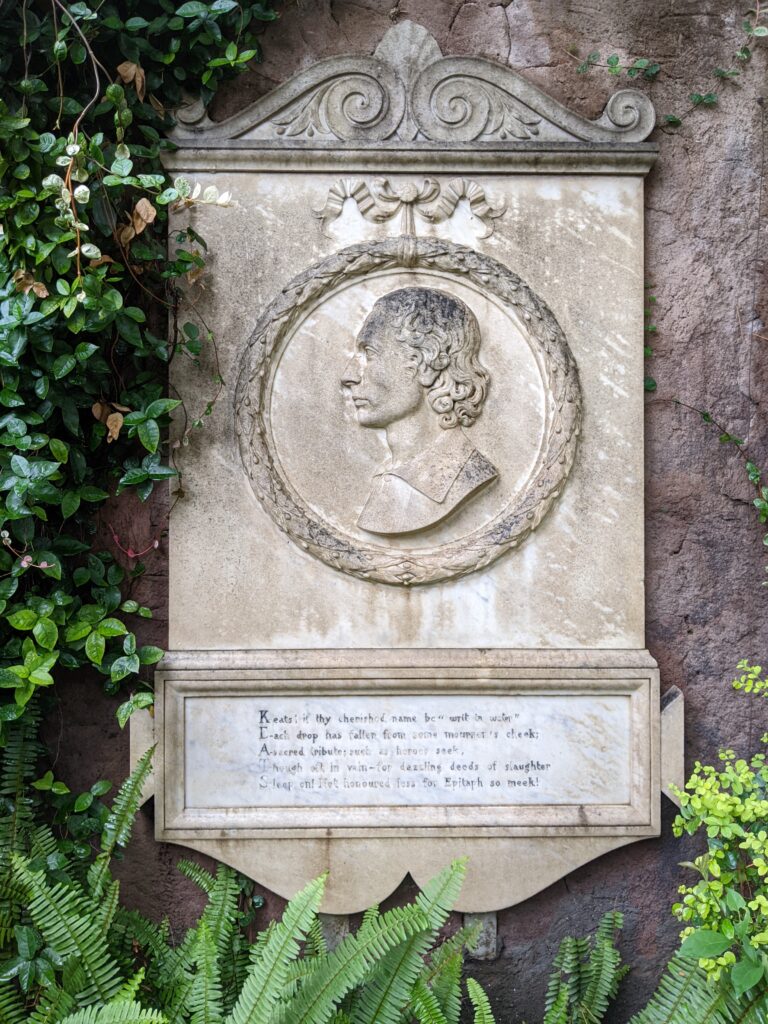
The above photo is of a plaque affixed to the wall close to his grave. I was able to sit and consider the short life of Keats with just a ginger cat for company – what a balm after Roman crowds.
But I am equally glad I went to the cemetery as I then walked amongst the other grave stones there. So many expatriate painters and sculptors and writers from America, or Australia or England are buried there. The atmosphere is still and meditative. It is a blessed relief from the chatter and noise of Rome.
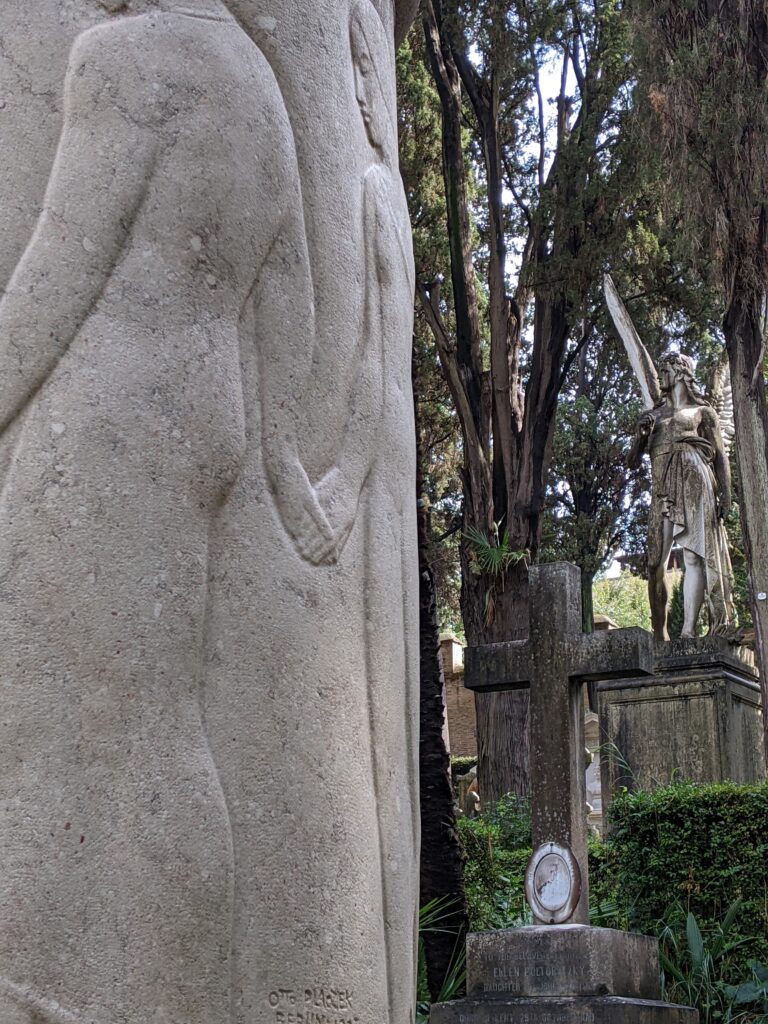
Below is the grave of a French artist…
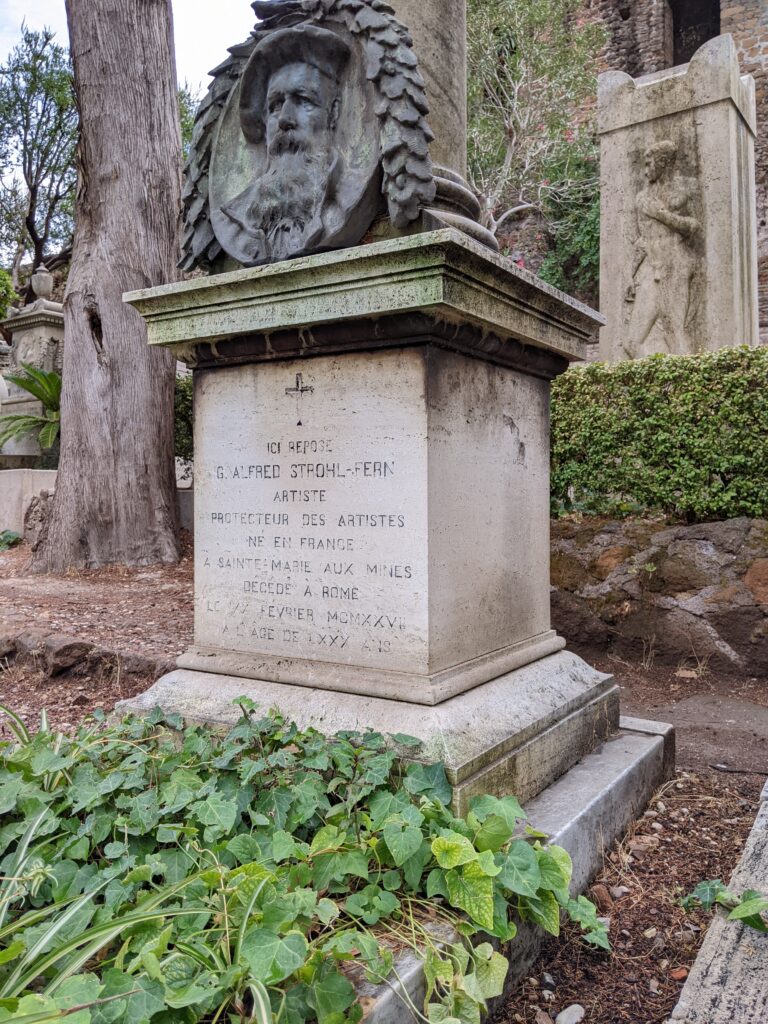
One night I walked over a Roman bridge into Travestere, and wandered into an English language bookshop. This is a photo of some cards on the wall there… Try to guess the writers.
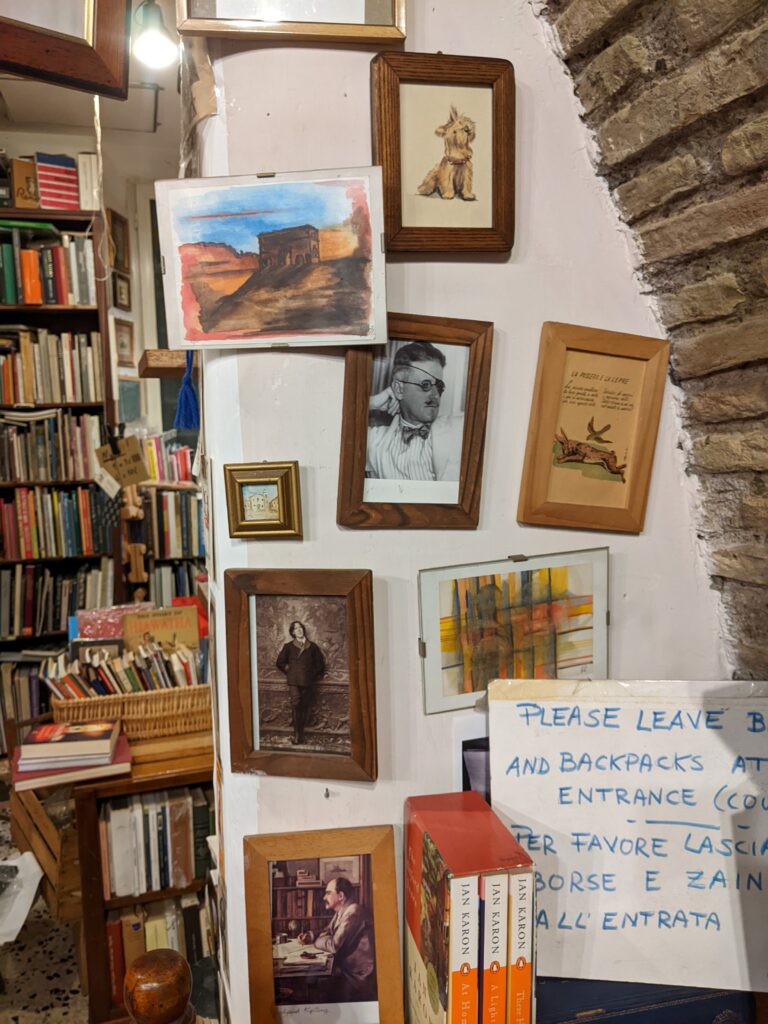
Another day I visited the Colloseum and the Forum. The crowds were a torrent of thousands entering the Colloseum. Then when they left they almost as a block walked straight past the Arch of Constantine, without pausing to glance at it, to enter the Forum. I couldn’t understand. The relief panels narrating a Roman victory in battle are more interesting than both for my money. It was one of many reminders on this trip that if its not famous then it isn’t worth seeing in the minds of the majority of tourists in Europe today. (This would be repeated when I was in Florence for example – the Bargello was empty while I avoided the Accademia knowing the presence of the David statue would guarantee hoards of hangers on.)
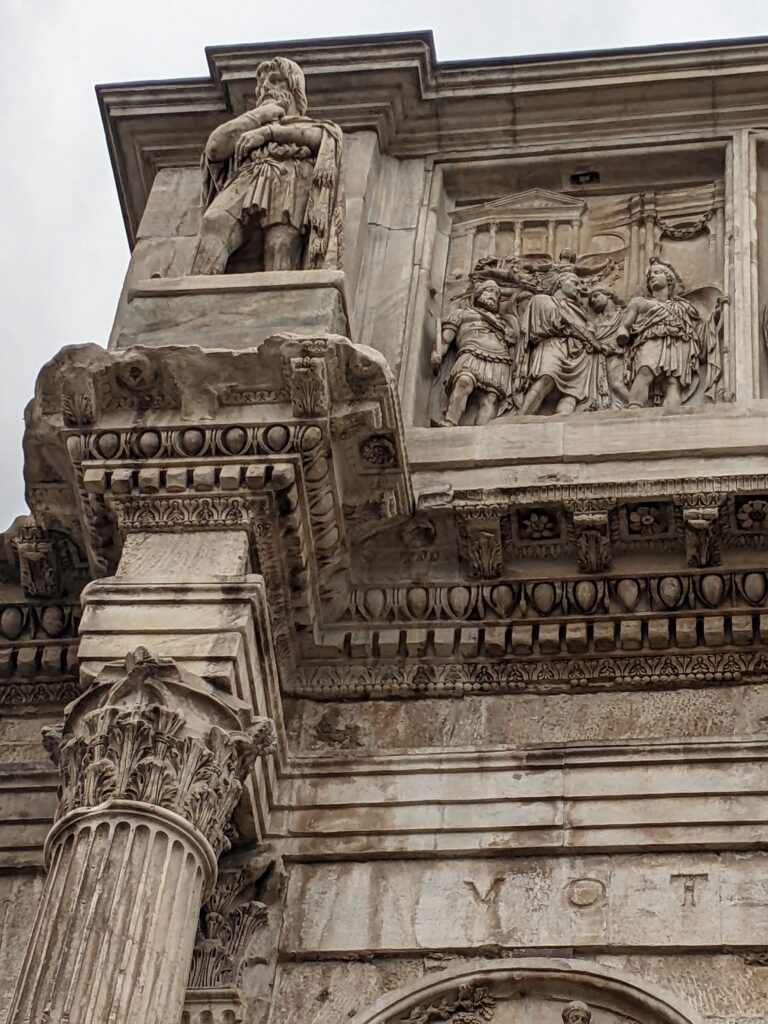
Below I’m looking out of the window of the Villa Farnesina – hardly anyone there – again, its not that famous.
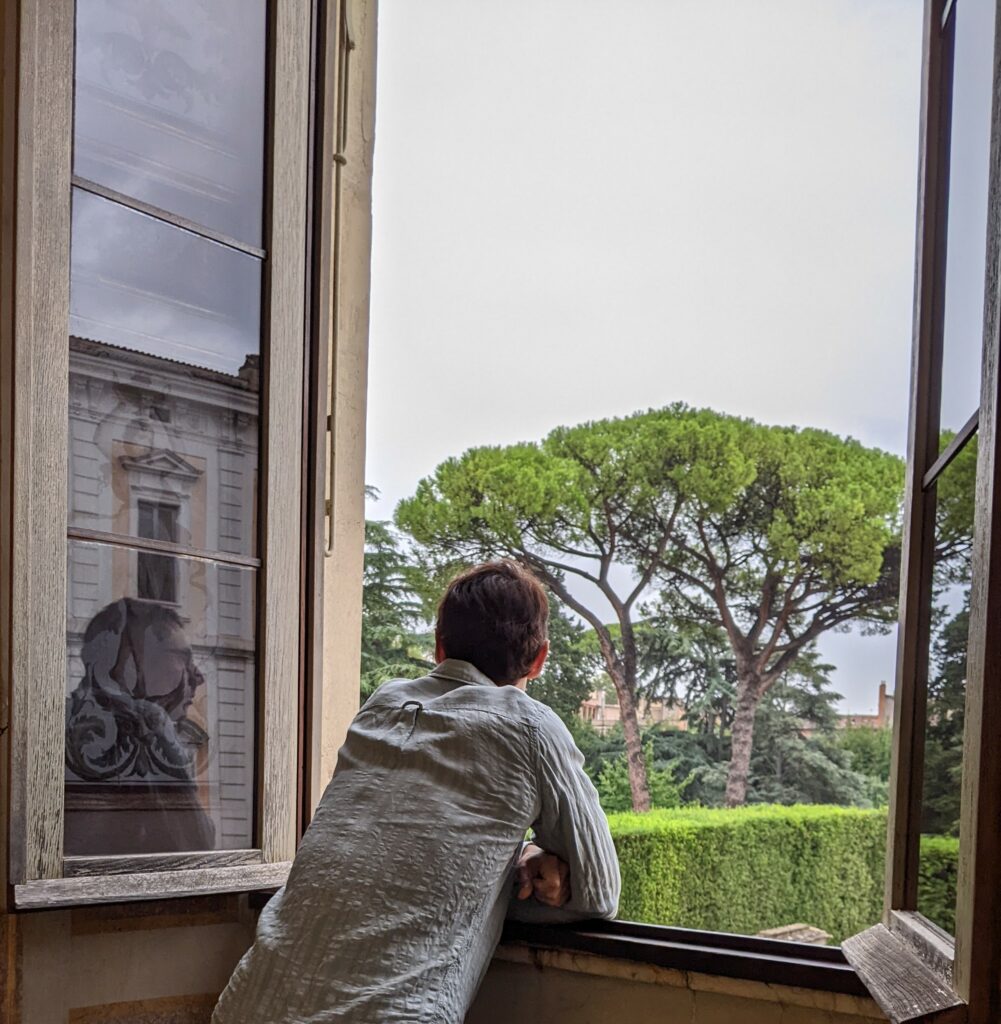
I also walked around the Palazzo Collona during my time in the city, but probably my favourite gallery and museum was the Capitoline. Much of the Capitoline museum is arranged as Keats saw it, as Henry James saw it, as Goethe saw it, as George Eliot saw it, and so you feel like you are treading hallowed ground as you walk through the rooms. Below is the bronze Brutus there…
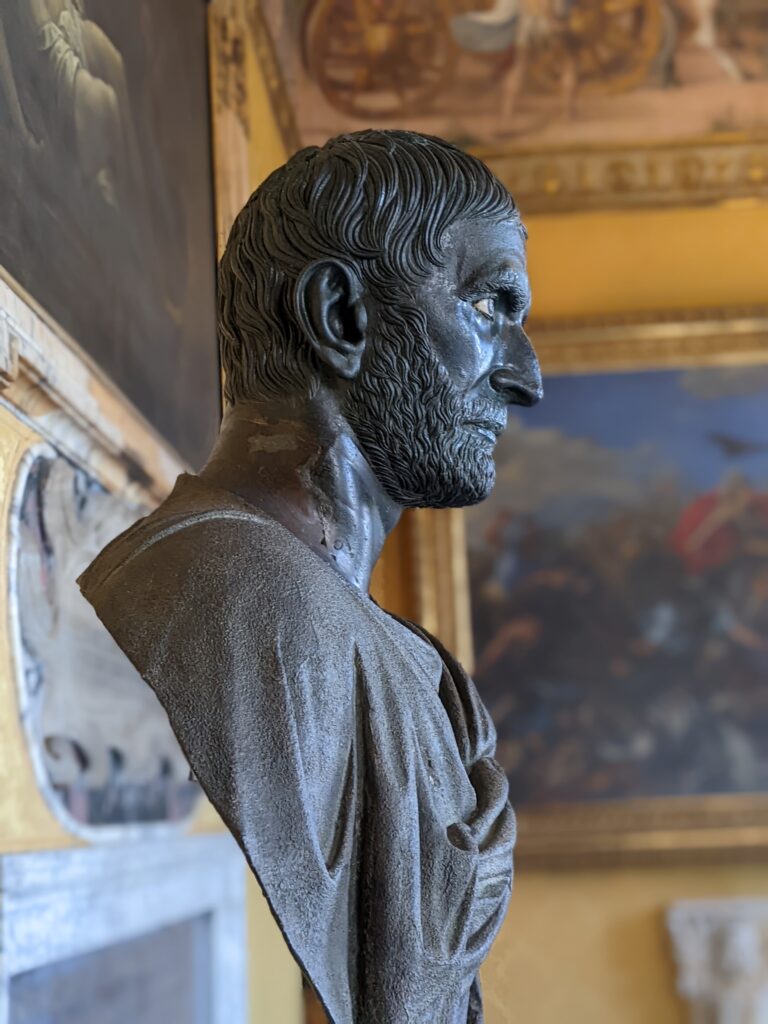
And below I am standing next to the original equestrienne statute of Emperor March Aurelius, the great philosopher. He used to stand in the middle of the Capitoline hill, and was only saved by being melted down after the fall of the Roman Empire by the fact that the Christians wrongly thought he was Constantine who had legalised Christianity – their misapprehension and ignorance saved a great work of art.
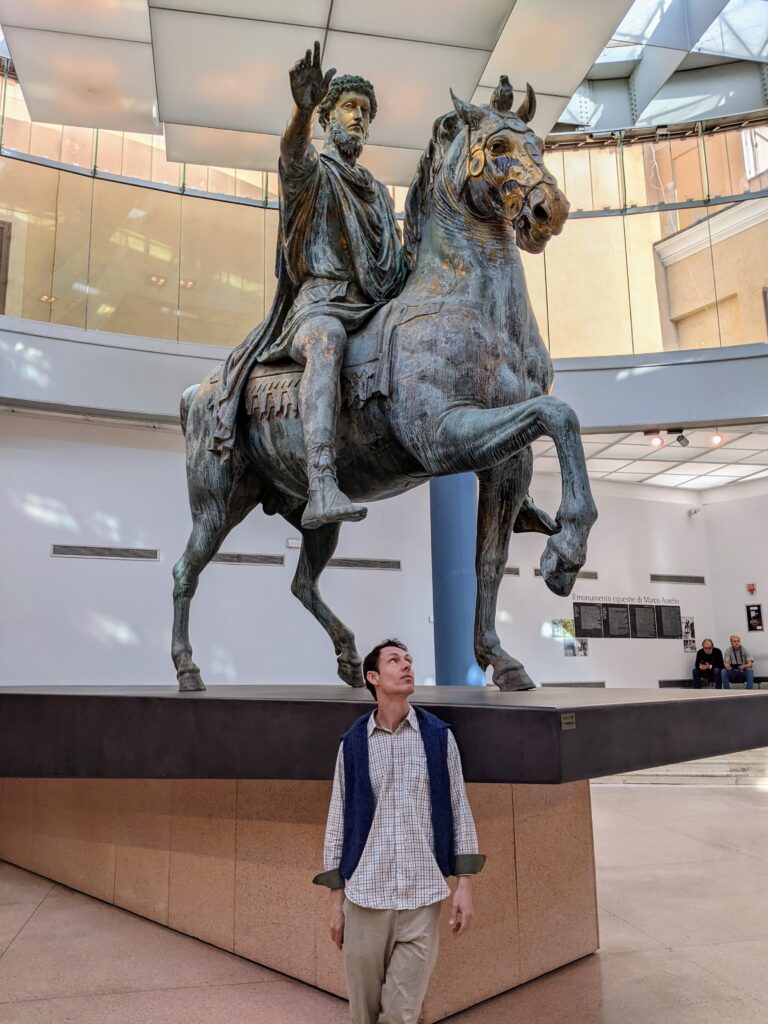
In a courtyard of the Capitoline is a vast 6 metre long statue from ancient Rome of the God of the Ocean, known today as Marforio. I leant against the fountain next to him and was amazed by his presence. This old Roman giant features in the 2013 film La Grande Bellezza by Paolo Sorrentino, but I didn’t know his presence would affect me so much in the flesh.
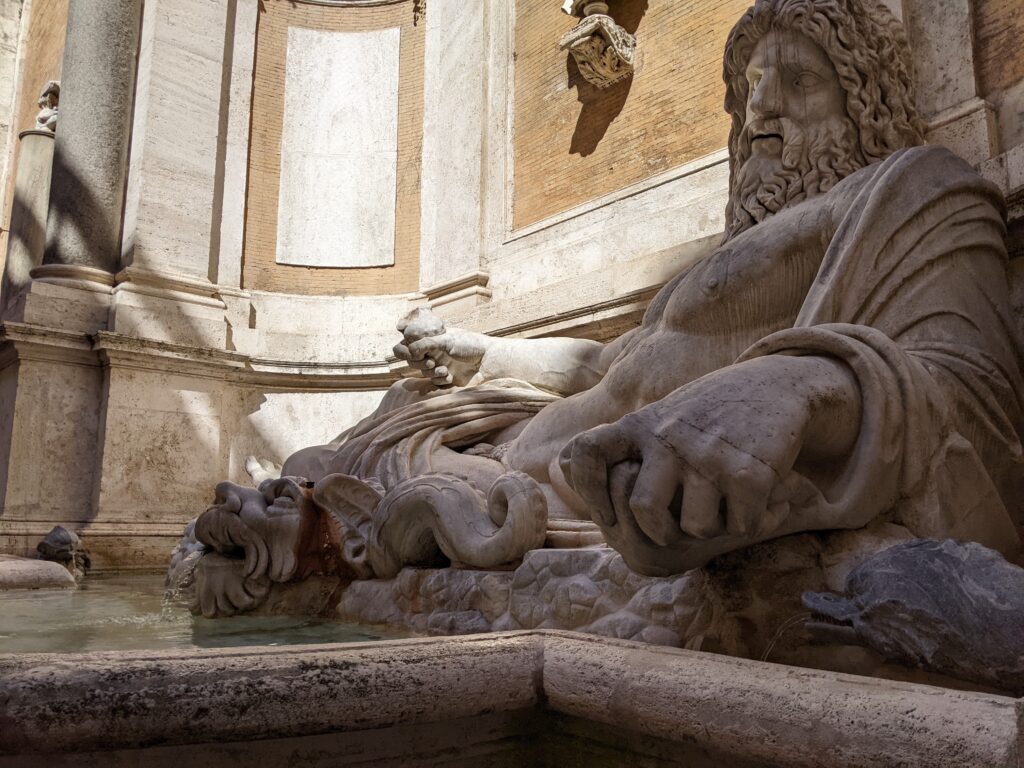
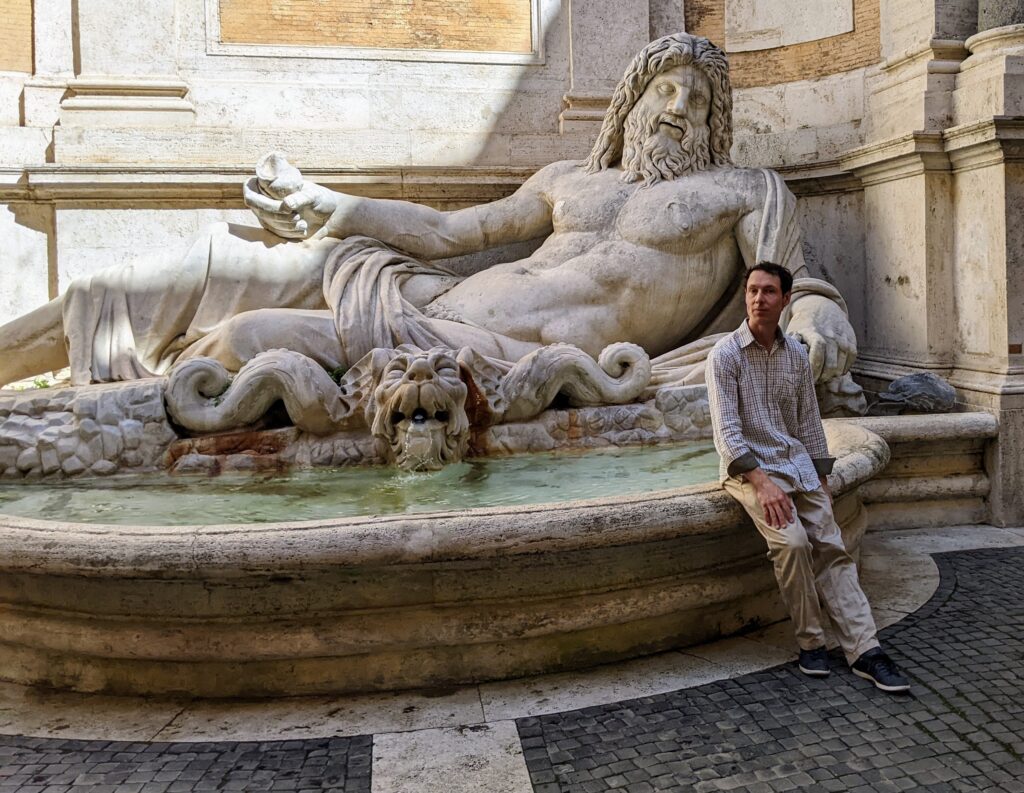
Before I left Rome I made it the Ara Pacis museum. Part of this alter to peace sits on the first story of the University of Western Australia Arts building balcony – a place I have spent a bit of time. Although not at UWA, I have always liked the below section of its relief panels. Tellus, mother earth, nourishes and protects her children. It was late in the day and I was one of only about five people in the museum. Outside the Tiber was visible, flowing past under trees in late summer leaf, through the glass walls of a museum first opened on this site by Benito Mussolini.
